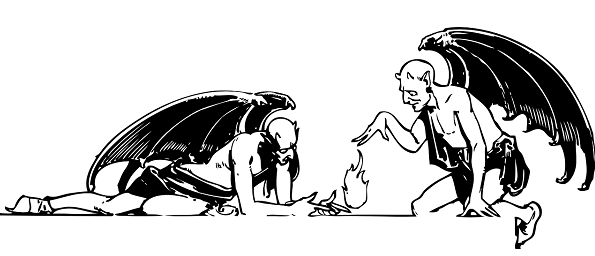
YouTube / iTunes / Spotify / Radio Public / Pocket Casts / Google Podcasts / Breaker / Overcast
Listen to ArtisanEnglish.jp posts & lesson intros here.
Idiom: The lesser of two evils
Making hard decisions is a part of life.
The decision-making process becomes even more complicated when we have to choose the lesser of two evils.
What I mean is that when you have to choose between two things, and neither one of them is good, you have to accept the lesser of two evils.
I have an anecdote from my high school teaching days, which is not very tasteful (you’ll get the pun in a moment), but it perfectly illustrates what it means to choose the lesser of two evils.
I was an Assistant Language Teacher (ALT) at a high school in Wakayama, Japan.
As you can imagine, here in the countryside, foreigners are still a bit of a novelty, especially young, handsome ones like I was.
To start my first class, all the students introduced themselves individually.
It took a long time as there were 41 students in the class.
Toward the end of the class, I allowed the students to ask me questions.
Of course, I got the standard questions about my age, height, favourite colour, favourite season, marital status, and whether my wife was Japanese.
The students were very interested in learning that my wife was Japanese and had graduated from that high school.
What was more surprising was that some of the more senior instructors at the school had taught my wife.
There are cheeky students in every class, and this class was no exception.
Eventually, the students asked about my favourite food, the food I disliked most and right at the end; I got this question: What would you choose, poo-flavoured curry or curry-flavoured poo?
Well, talk about choosing the lesser of two evils. Luckily, I was saved by the bell.
Flesch-Kincaid Readability Test
This post is understandable by someone with at least an 8th-grade education (age 13 – 14).
On the Flesch-Kincaid reading-ease test, this post scores 68.
The easier a passage is to read, the higher the score on a scale of 0 – 100.

